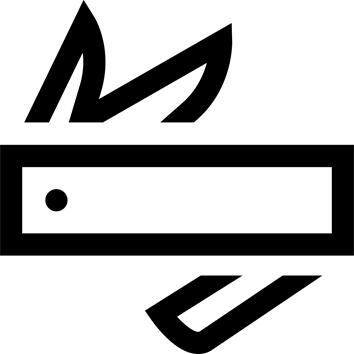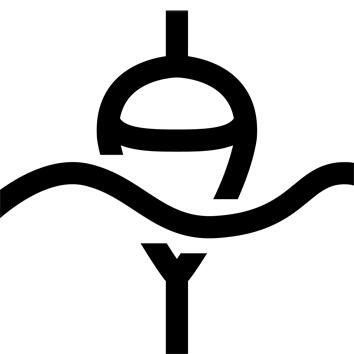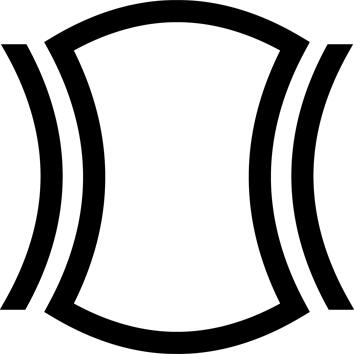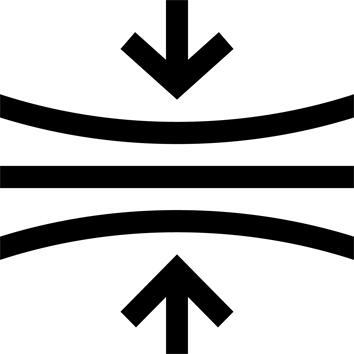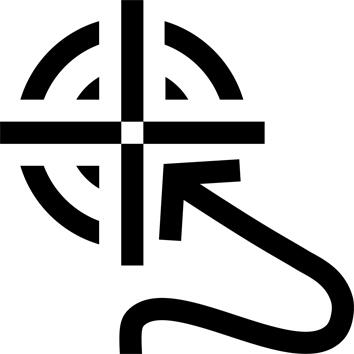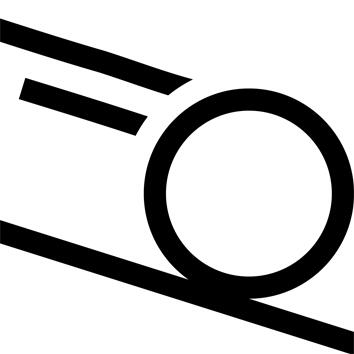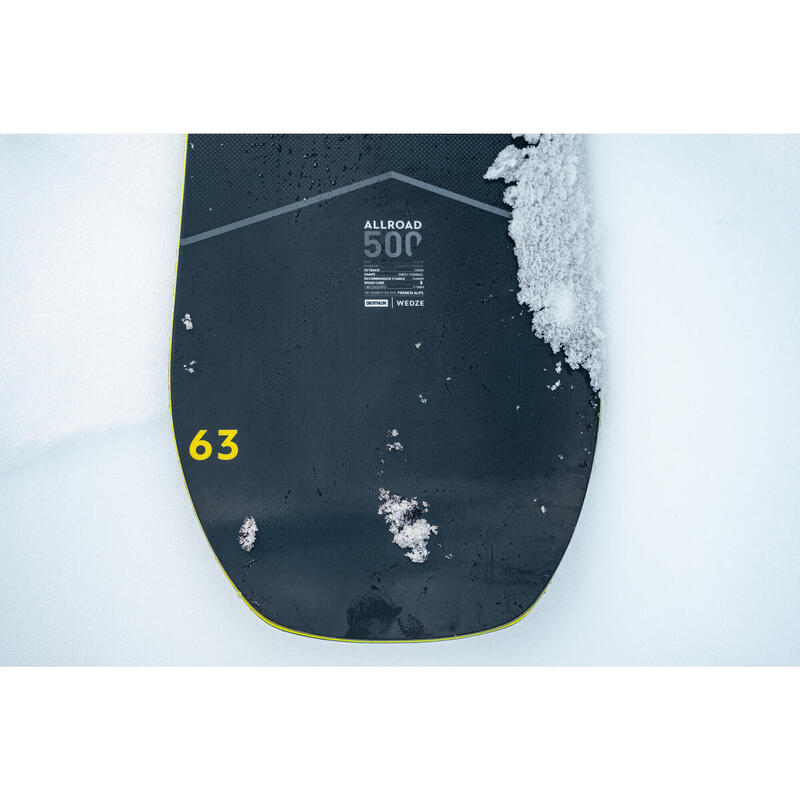Technical information
Fried sole
Poplar wood core 20 millimeter
Number of inserts: 10 + 10
DIRECTIONAL
Setback: 25 mm
Size 158 cm WIDE
Front width 297 mm, center 260 mm, rear 289 mm
Recommended radius 9 m
Stance: 530 mm.
Size 163 cm WIDE
Front width 302 mm, center 265 mm, rear 294 mm
Radius 9.5 m
Recommended stance: 550 mm.
Size 168 cm WIDE
Front width 310 mm, center 273 mm, rear 303 mm
Radius 9.8 m
Recommended stance: 570 mm.
What size should I choose for my AllRoad 500?
In All Mountain, we choose -15 or -20 cm (for example, someone 1m74 tall can take a board between 1m59 and 1m54).
As there's rocker on the All Road, you can take it a little bigger.
Taking a smaller board makes it easier to ride. It's also advisable for people who are light in relation to their height. If you're taller, you'll be more stable at higher speeds.
158cm (60 - 80 kg) => from 1m70 to 1m75
163cm (75 - 90 kg) => from 1m75 to 1m82
168cm (85 - +110 kg) => 1m80 and +
A word from the product manager
We wanted to develop a versatile board for all those who aren't interested in the park. This board is suitable for both on- and off-piste riding, without the need for a demanding level of fitness and technique.
All in good fun!
Program and practice area
The All Road is the All Mountain board par excellence: 50% piste and 50% off-piste.
You can ride everywhere, on all types of snow, on piste and off-piste, in powder of course, but also in crusty snow, thanks to its long, tapered front tip. That's why its nose (front tip) has this particular shape.
Don't go to the parks: this board isn't made for modules or riding backwards.
Directional snowboarding
The shape of the board is directional, i.e. it has a front and a back. It's not symmetrical, the rear of the board is slightly narrower than the front, and the bindings and setbacks are a little further back. A directional shape offers better grip during the turn, better control of the trajectory and more boost out of the curve.
Classic camber + rocker
We retain all the advantages of classic camber (thanks to the board's elasticity, classic camber acts like a spring to provide grip on all types of snow, dynamism in edge-to-edge transition and recovery on exit from turns) with the added benefits of rocker (under stress, the board's points of contact with the snow move closer together, making it easier to handle). The rocker lengthens and lifts the tip so that the powder flows more easily under the board.
Medium and versatile flex (6/10)
Flex is the stiffness of the board between front and rear.
The Bullwhip 500 All Road's flex is around 6/10, which is medium and versatile. It provides healthy behavior in sharp turns, but also tolerance to edge errors.
Medium and multi-purpose twist
Torsion, the stiffness of the board in torsion between the feet, is around 6/10 on the All Road 500 board, which is steep enough for good handling in curves, recovery at the end of turns and nervousness when going from edge to edge. This gives the board a confirmed to expert level, while remaining physically very accessible.
Setback 25 mm
Setback is when the board's support points on the snow are not symmetrical with respect to the center of the board, but are shifted backwards. The bindings are then also shifted backwards by the same distance.
25 mm of setback = significant setback for directional boards. It provides better handling in curves and more lift in powder, since the weight is on the back of the board, so the front naturally lifts.
Recommended fasteners
3 possible choices:
_ The Snb 500 binding is a high-performance traditional snowboard binding for exploiting the piste, carving and off-piste potential of the All Road 500. The spoiler angle can be adjusted.
_ The Snb 100 binding will suit tighter budgets; it still performs well but simply has fewer adjustment options.
_ The Flow Nexus binding for those who want a fast binding to put on.
When should you wax your snowboard?
Decathlon snowboards leave the factory waxed. They are ready to glide.
Like all snowboards and skis, they require regular maintenance: ideally, wax every 5 outings and at least once a year:
- either at the beginning of the season to start with a very good glide
- or at the end of the season to let the wax protect the base throughout the summer.
Glide quality: sintered sole
The soles are made of polyethylene, but using 2 different technical processes:
- extruded soles, with a certain density of polyethylene
- sintered soles, with a higher density of polyethylene (fewer holes, more PE) A sintered sole is the Rolls Royce of soles. The glide is really fantastic.
What is the Wide in snowboarding?
A "Wide" board is one that is wider than normal to prevent the "big" feet from hitting the snow on a turn that is a little too hard and causing you to fall.
From size 44 upwards, it is advisable to take a "Wide" board.
The "Wide" is measured by the width of the board at the center. At Décathlon, we have defined:
- up to 254 mm : normal board / feet 36 to 43
- from 255 mm to 264 mm : Mid Wide / feet 41 to 45
- from 265 mm : Wide / feet 43 to 49
Can the store mount the bindings on my board?
Yes, there's a video on how to assemble the bindings in this product sheet, but you can ask your local store to assemble the bindings with your own settings. Remember to take your pair of snowboard boots with you to ensure 2 correct settings:
1. That of the binding from front to back, so that the boots don't protrude more from the toes than from the heel, or vice versa
2. The straps on your binding, which must fit snugly over your boots.
Board weight
158 cm : 2.87 kg +/- 5%
163 cm : 3.09 kg +/- 5%
168 cm : 3.21 kg +/- 5%
0% Park: can I do jumps with this board?
Yes.
0% Park simply means that the characteristics of this snowboard are not compatible with freestyle: the board isn't short, it isn't symmetrical from front to back... All freestyle moves, rotations, jumps landing upside down, etc. are still possible, but it's really not the most suitable board.
On the other hand, on piste, off-piste and backcountry, you can do all the jumps you want.
